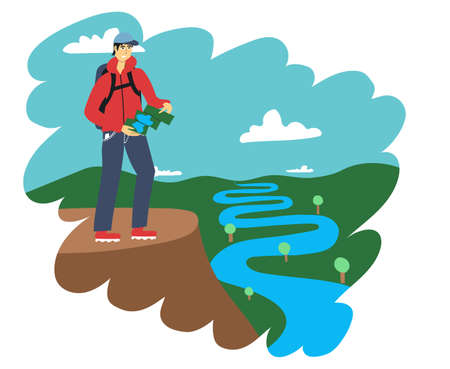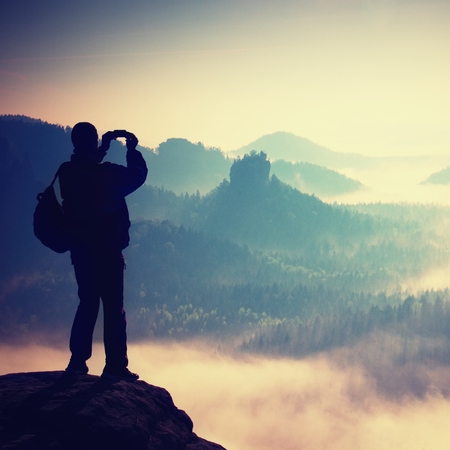The Spirit of Hiking Communities in the U.S.
Across the United States, hiking is more than a pastime—it’s a way of connecting with both nature and people. American hikers often speak of the “trail family” spirit, where camaraderie, trust, and shared adventure form deep bonds among members. Whether you’re trekking the Appalachian Trail in the East or exploring the rugged beauty of the Pacific Northwest, every region has its own traditions and unspoken rules that shape how local groups come together. At the heart of these communities are values like inclusivity, mutual support, and respect for the environment. These principles foster a welcoming atmosphere for both seasoned backpackers and first-time hikers alike.
Regional Group Dynamics
Hiking culture varies across America’s diverse landscapes. In New England, group hikes often emphasize tradition and stewardship of historic trails. The West Coast, known for its progressive outdoor scene, tends to focus on sustainability and environmental activism. Meanwhile, hiking clubs in the South are famous for their hospitality and laid-back vibe, while Midwestern groups frequently highlight teamwork and resilience against challenging weather conditions.
Key Values That Bind American Hikers
| Region | Core Values | Group Traditions |
|---|---|---|
| Northeast | Preservation, Heritage | Trail maintenance days, historical hikes |
| South | Hospitality, Inclusivity | Potluck trail meals, open invitation hikes |
| Midwest | Teamwork, Resilience | All-weather outings, cooperative planning |
| West Coast | Sustainability, Activism | Leave No Trace workshops, eco-friendly treks |
The Unifying Power of Adventure
No matter where you hike in America, there’s an underlying sense that adventure is best when shared. The challenges of the trail—long miles, steep climbs, unpredictable weather—create opportunities for connection and collaboration. This spirit of community not only enhances safety but also makes every journey more meaningful. For those seeking new friendships or looking to join established hiking groups, understanding these regional differences can help you find your perfect fit on America’s vast network of trails.
2. Popular Platforms to Find Outdoor Groups
When it comes to finding a community of fellow hikers and backpackers in the United States, there are several popular platforms that help outdoor enthusiasts connect both online and offline. These platforms make it easy for Americans to organize group hikes, backpacking trips, and social adventures with like-minded people.
Top Online and Offline Platforms
| Platform | Type | Main Features | How Americans Use It |
|---|---|---|---|
| Meetup | Online/App | Event organization, location-based groups, RSVP system | Finding local hiking events and ongoing outdoor clubs across cities and states |
| Facebook Groups | Online/Social Media | Community discussions, event postings, photo sharing | Joining regional or national hiking groups to share tips and schedule outings |
| Local Outdoor Retailers (e.g., REI) | Offline/Store-Based & Online | In-store bulletin boards, guided outings, classes, workshops | Attending free or low-cost group hikes and clinics posted at physical locations or on retailer websites |
| The Outbound Collective | Online/App | User-generated trip guides, activity filters, trip planning tools | Discovering trail recommendations and joining meetups organized by other users nationwide |
| Sierra Club Local Chapters | Offline/Organization Website | Organized outings, conservation activities, member communities | Participating in volunteer-led hikes and backpacking adventures with an environmental focus |
| Trailhead Apps (AllTrails, Hiking Project) | Online/App | User reviews, trail maps, meetup listings (occasionally integrated) | Connecting with others who have completed similar trails and arranging group hikes via forums or message boards |
The American Approach: Mix of Digital & In-Person Connections
The U.S. outdoor community thrives on blending tech-savvy resources with traditional face-to-face meetups. Whether you’re looking for a spontaneous weekend trek or a long-term hiking crew, these platforms provide convenient access to countless opportunities. Many Americans rely on digital spaces to plan logistics and break the ice before meeting up for real-world adventure—making it easier than ever to build lasting friendships through shared love of the outdoors.

3. Navigating Group Etiquette and Culture
When joining a hiking group or seeking backpacking buddies across the U.S., understanding and respecting group etiquette is essential for building trust and ensuring a positive experience for everyone. While each group may have its own unique vibe, there are some unwritten codes that most American hikers follow. Respecting these customs not only fosters camaraderie but also ensures safety and inclusiveness on the trail.
Unwritten Codes & Trail Etiquette
Group hiking culture in America values cooperation, punctuality, and clear communication. Being on time at the trailhead is expected—groups often have schedules to maximize daylight and maintain safety. When moving as a group, it’s important to match your pace with others, check in regularly, and avoid wandering off alone unless previously discussed.
| Etiquette Principle | What It Means |
|---|---|
| Stay Together | Keep within sight and sound of the group; don’t leave without informing someone. |
| Communicate Needs | Speak up if you need breaks, water, or have any concerns. |
| Respect Leadership | If there’s a designated leader or organizer, defer to their decisions about routes or safety calls. |
The Importance of Inclusiveness
Diversity is valued in American outdoor culture, so most groups strive to be welcoming regardless of skill level, background, or identity. Newcomers are usually encouraged to introduce themselves and share their experience level. If you’re new to a group, don’t hesitate to ask questions—most hikers are happy to help you feel included. Supporting all members creates a stronger sense of community and adventure.
Leave No Trace Principles
No matter where you hike in the U.S., Leave No Trace (LNT) ethics are considered non-negotiable. These principles protect America’s wild spaces for future generations and ensure that everyone can enjoy pristine trails. LNT covers everything from packing out trash to minimizing campfire impact.
| LNT Principle | Application in Group Settings |
|---|---|
| Pack It In, Pack It Out | Every member carries out their own trash—and helps clean up shared areas. |
| Respect Wildlife | Observe animals from a distance; never feed or disturb them. |
| Stick to Trails | Avoid creating new paths; this protects plant life and prevents erosion. |
Building Lasting Connections Through Respect
Navigating group etiquette and embracing inclusivity aren’t just about following rules—they’re about building lasting friendships and strengthening America’s outdoor community. By practicing good manners and upholding Leave No Trace values, you’ll find your place among hikers and backpackers nationwide, making every adventure more meaningful.
4. Safety in Numbers: Benefits of Group Hiking
When exploring Americas vast wilderness, hiking with a group brings a wealth of advantages that go far beyond companionship. Whether youre tackling the Rockies, wandering through Appalachia, or discovering hidden trails in the Pacific Northwest, group adventures enhance both your experience and safety. Here’s why joining a hiking community matters:
| Advantage | Description |
|---|---|
| Increased Safety | With more eyes and ears on the trail, groups are better equipped to spot hazards, avoid getting lost, and respond quickly to emergencies. Wildlife encounters and unexpected injuries are easier to manage with support. |
| Shared Knowledge | Group members often bring diverse trail wisdom—ranging from navigation tips to local lore—enriching everyone’s outdoor skills. New hikers benefit from experienced mentors, while seasoned trekkers learn fresh perspectives. |
| Diverse Skill Sets | Every hiker has unique strengths: some excel at first aid, others at reading maps or cooking camp meals. In a group, these skills combine for a smoother, safer adventure. |
| Long-lasting Friendships | Shared experiences on the trail forge deep bonds. Many find that their hiking buddies become lifelong friends, united by memories made under starlit skies and summit sunrises. |
Across America, hiking groups offer a supportive network where everyone—from solo backpackers seeking new connections to families venturing into the wild—can feel secure and welcome. As you join these communities, you’ll discover that the journey is just as rewarding as the destination.
5. Success Stories: Real-Life Accounts from American Hikers
Across the United States, joining hiking and backpacking groups has led to unforgettable adventures and lifelong friendships. Many hikers have found not just trail buddies, but supportive communities that enrich their outdoor experiences. Here are a few inspiring accounts of how these connections have made a difference:
From Solo Trekker to Trail Family
Jessica, from Portland, Oregon, started hiking solo but felt something was missing. After joining a local women’s hiking group, she discovered camaraderie and mentorship that boosted her confidence. Together, the group tackled the challenging Timberline Trail around Mt. Hood—a feat Jessica had always dreamed of but never dared attempt alone.
Overcoming Obstacles Together
For many hikers, facing difficult trails or unpredictable weather is easier with a group. In Colorado, Mark joined a backpacking club before attempting his first 14er (a peak over 14,000 feet). When sudden storms rolled in, the team’s collective knowledge ensured everyone stayed safe and motivated to reach the summit together.
Stories at a Glance
| Name | Location | Challenge Faced | How the Group Helped |
|---|---|---|---|
| Samantha | Appalachian Trail, GA-VA | Losing motivation mid-trail | Group encouragement & shared supplies kept her going |
| Tony & Carlos | Zion National Park, UT | Navigating technical canyons | More experienced members taught essential skills |
| Mia | PCT Section Hike, CA | Long-distance loneliness | Found hiking partners through an online forum meet-up |
The Ripple Effect: Community Beyond the Trail
The connections made while hiking often extend beyond the outdoors. Potluck dinners, gear swaps, and volunteer trail maintenance days are just some ways these groups strengthen their bonds off the trail. As American hikers prove time and again, adventure is sweeter—and sometimes safer—when shared.
6. Tips for First-Timers: How to Join and Thrive
Getting involved with hiking groups and finding backpacking buddies can feel intimidating, but the outdoor community across America is famously welcoming to newcomers. Here’s how you can set yourself up for success and make your first experiences memorable—in all the right ways.
Get Prepared Before You Go
Preparation is key for a safe and enjoyable adventure. Make sure you have the basics covered:
| Checklist Item | Why It Matters |
|---|---|
| Proper Footwear | Prevents blisters and injuries; essential for comfort on the trail |
| Weather-Appropriate Clothing | Keeps you comfortable and safe from changing elements |
| Daypack Essentials (water, snacks, first-aid) | Ensures you stay hydrated, energized, and ready for minor issues |
| Trail Map/GPS App | Avoids getting lost and helps you track your progress |
Making a Great First Impression
- Be on Time: Punctuality shows respect for group leaders and fellow hikers.
- Introduce Yourself: Share a bit about your experience level and what you’re hoping to get out of the hike.
- Ask Questions: Don’t be afraid to seek advice or clarification—most people are happy to help!
Embrace the Group Spirit
The heart of American hiking culture is community. Be open to meeting people from different backgrounds, and share your enthusiasm for nature. Offer help if someone needs it, whether it’s sharing an extra snack or helping with navigation.
Dive In, But Pace Yourself
If you’re new to hiking or backpacking, start with beginner-friendly outings. Gradually challenge yourself as you gain confidence and fitness. Many groups offer tiered hikes—from leisurely nature walks to strenuous summit attempts—so there’s always something that matches your comfort level.
Your Adventure Starts Here
The best way to thrive in hiking communities is simply to show up with an open mind, readiness to learn, and respect for nature and others. With these practical tips, you’ll not only find your tribe but also create lasting memories along America’s incredible trails.


